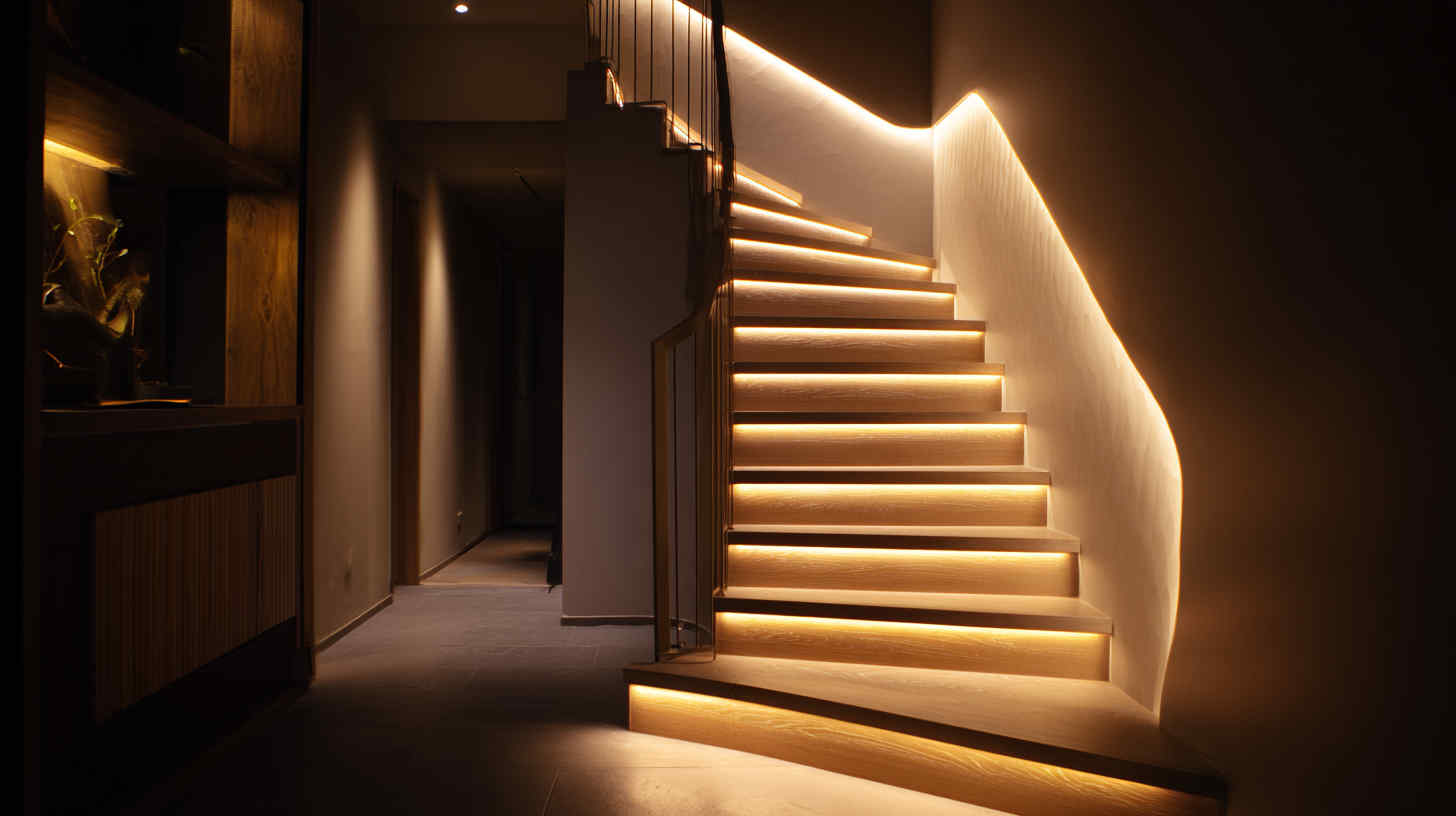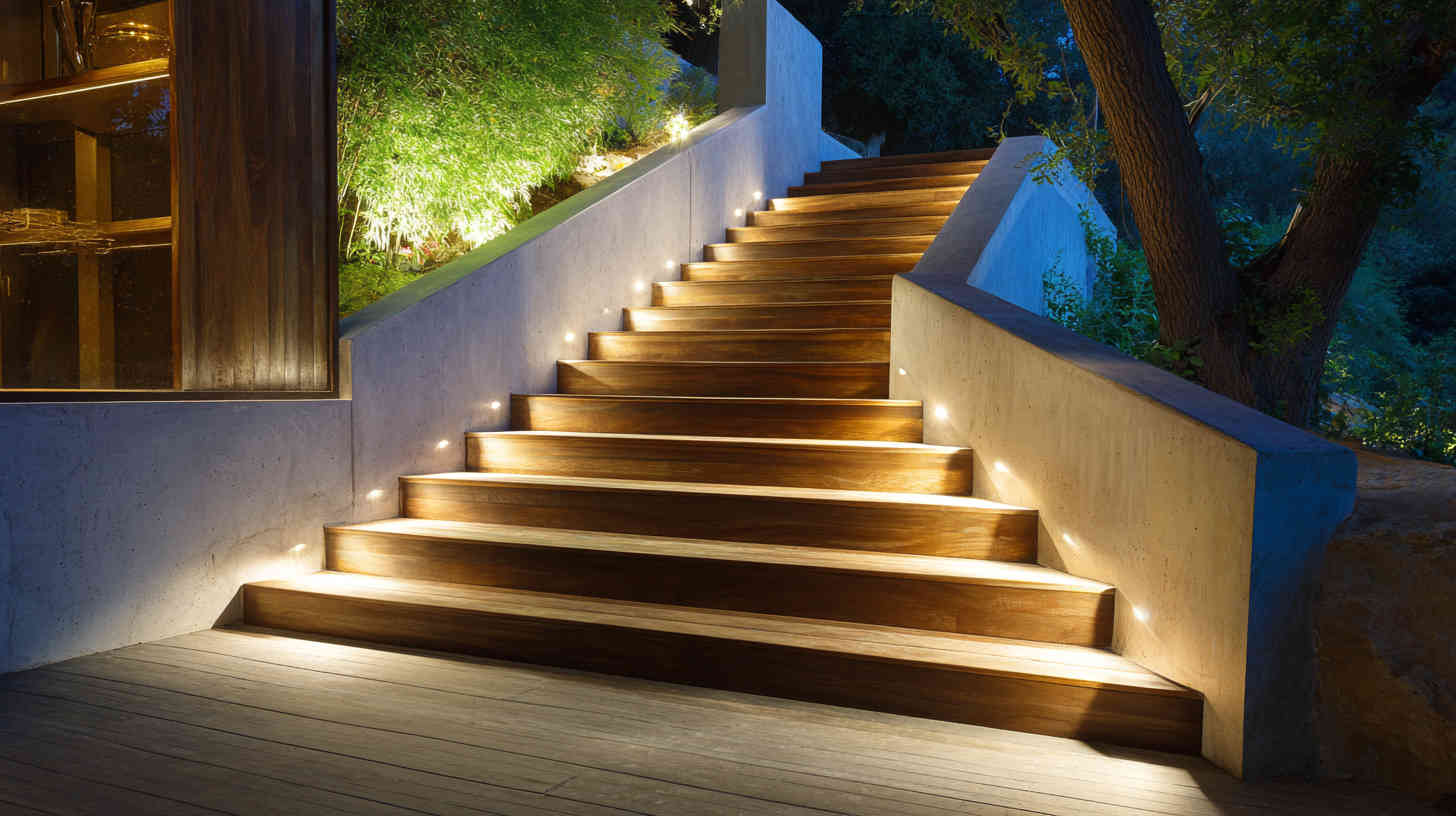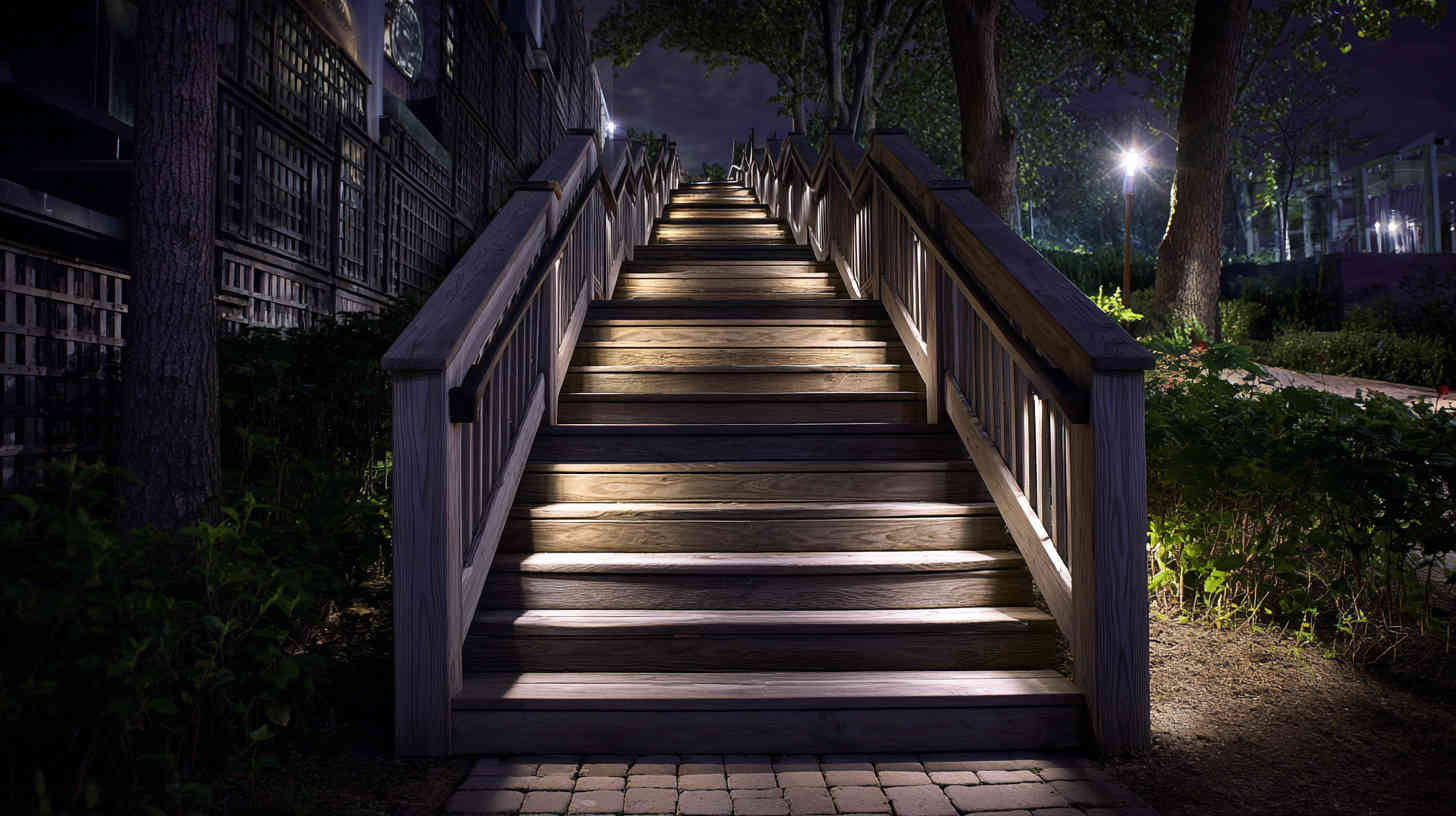Stumbling on dark stairs is no joke. A single misstep can lead to sprains, bruises, or even worse—especially at night. That’s why smart stair lighting isn’t just stylish—it’s safety.
To light up stairs at night, use LED stair lights with motion sensors, recessed step lights, or strip lights along stair edges or handrails. Brightness should stay around 100–200 lumens per step, soft enough to avoid glare, yet strong enough for clear vision. Battery-powered or solar options can also work when wiring is hard. This simple upgrade can prevent injuries and boost your home’s ambiance.
There’s more to it than just sticking on a light. Let’s explore.
Table of Contents
How do you light up stairs at night?
Lighting stairs at night is about making sure people can move safely while also creating a welcoming, stylish atmosphere. From my experience, the best solution is using LED stair lights equipped with motion sensors. These lights only switch on when someone is nearby, so they save energy while still giving you enough brightness exactly when needed.
There are several smart ways to position these lights:
- Recessed into stair risers: This hides the fixture and gives a clean, modern look while lighting each step clearly.
- Along the side walls: Wall-mounted LEDs softly wash the steps with light and reduce glare.
- Under the stair nosing: This creates a soft glow right where people step, reducing the chance of trips or falls.
- Along the handrails: Integrated strip lighting provides both functional and aesthetic benefits, especially in contemporary spaces.
These different placements all work together to eliminate dark spots and make the stairs look like they’re gently glowing—almost like they’re floating.
For residential use, I recommend picking a color temperature between 2700K and 4000K. This gives off a warm and inviting glow without sacrificing visibility. And if wiring is a challenge, go with rechargeable or battery-powered LED stair lights. Many models come with adhesive backing, so you can just stick them in place—no electrician needed.

What is the best way to light a staircase?
When someone asks me the best way to light a staircase, I always say—it depends on what you’re trying to achieve. If safety is your top priority, then motion-activated LED lights are the clear winner. You can install them along the stair wall, under each tread, or right on the risers. They’ll light up only when needed, saving energy while guiding the way.
If you’re going for a sleek, modern look, LED strip lights are your best friend. Mount them underneath the stair nosing or along the underside of the handrail. This setup gives your staircase a clean, floating effect that’s both functional and stylish.
Want a complete solution? Combine ceiling-mounted LED downlights with low-level stair tread lights. The downlights create overall ambient light, while the tread lights focus specifically on each step. This dual-layer approach works great in homes, hotels, or commercial staircases.
And don’t overlook the light finish. Frosted or diffused covers help soften the light and cut down on glare, making the stairs easier on the eyes. If you’re using wireless lighting, make sure to choose a dependable motion sensor system. You want lights that activate instantly and don’t flicker or fail when it’s dark—that’s what keeps your stairs both safe and beautiful.
How bright should stair lights be?
When lighting stairs, you don’t need to blast them with brightness. The goal is simple: provide just enough light so people can walk safely without tripping—especially at night. I typically recommend around 100 to 200 lumens per step for indoor settings.
That brightness is ideal for LED stair lights in homes. It’s soft enough not to disturb anyone but still gives clear visibility. If you’re lighting stairs in a commercial building, hotel, or outdoor area, it’s fine to go a bit higher—especially where safety regulations or more foot traffic demand it.
Now let’s talk color temperature. Stick to 3000K to 4000K. That range gives you a warm to neutral white light. It feels natural and comforting at night without being too yellow or too blue. I usually avoid cool white (5000K and above) in stairwells—it tends to look harsh and clinical, especially in homes or cozy spaces.
Keep it simple: soft brightness, warm tones, and thoughtful placement. That’s what makes stair lighting effective and pleasant.

How many lights for staircase?
Let’s keep it practical. First, count the number of steps. If you want that clean, upscale look—like something straight out of a luxury magazine—go with one light per step. This works great with LED strips tucked under each stair nose or with small recessed lights in the risers.
Now, if you’re working on a tighter budget or just want something more subtle, spacing lights every two to three steps works just fine. Wall-mounted stair lights evenly spaced can give you enough coverage without overdoing it.
Got a long staircase? Here’s a tip: combine ceiling-mounted downlights for general illumination with a few well-placed, motion-sensor lights near the floor or wall. That mix adds safety and a bit of flair.
It’s all about balance. Too few lights and you’ve got shadows—someone could trip. Too many and it starts to look like an airport runway. Find that sweet spot based on your staircase length, style, and purpose.
How to fit LED lights on stairs?
Fitting LED lights on stairs isn’t as hard as it sounds. The method really depends on the type of light you’re using.
- Recessed lights: These are the most permanent option. You’ll need to cut out holes in the stair risers or the nearby wall, install the fixtures, and connect them to a low-voltage power supply or transformer. It’s best to plan your wiring route ahead of time so it stays hidden and neat.
-
LED strip lights: These are super popular and easy to work with. You can stick them right under each stair nosing or install them inside aluminum profiles for a sharper finish. Most LED strips have adhesive backing, which makes installation quick. Just make sure the surface is clean and dry before sticking them on.
-
Motion sensor bulkhead lights: These are perfect if you don’t want to mess with wiring. Rechargeable models make it even easier. Just charge them, peel off the backing, and stick them where you want. Great for retrofits or rental properties.
Whatever method you choose, always test the layout first. Turn on the lights, check the angles, and make sure the spacing feels right. Hide wires wherever you can, and if you want that high-end finish, go with aluminum channels—they make everything look clean and professional.

Can I leave my LED lights on all night?
Yes, you absolutely can—especially with LED. Unlike traditional bulbs, LEDs don’t get hot, use very little power, and have a long life. But to be honest, you don’t need them on all night.
That’s why I love LED stair lights motion sensor types. They only activate when someone approaches, then turn off after a set time. That saves energy and extends the light’s life even more.
If you need 24/7 lighting for safety (like for seniors), go for dimmable LEDs with timers or dusk-to-dawn features.
How to light stairs without electricity?
No wiring? No problem. You’ve got a few solid options.
- Battery-powered LED stair lights: Many come with motion sensors and magnets or adhesive backing. Super easy to install and recharge.
- Solar LED step lights: Perfect for outdoor steps. Install them during the day, and they automatically glow at night.
- Glow-in-the-dark stair tape: Not as bright, but gives basic visibility without any power.
These are ideal for quick upgrades, temporary installs, or areas where running cables just isn’t realistic.

Conclusion
Lighting your stairs at night isn’t just about beauty—it’s about safety, function, and peace of mind. Whether you go high-tech with motion sensors or keep it simple with LED strips, the right lighting can make every step safer and more stylish.
Need help picking the best LED stair lights? We’ve got rechargeable, motion sensor, and customizable options—reach out to us at Logos Lighting!
Request A Free Quote Now!
Send us a message if you have any questions or request a quote. We will get back to you ASAP!















